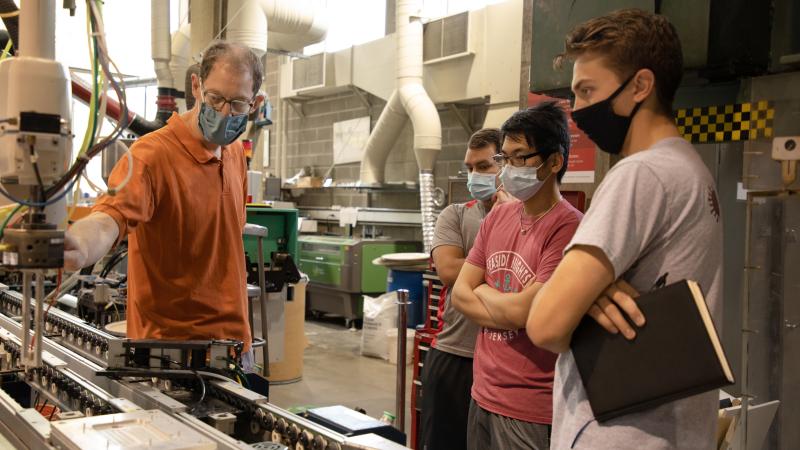Tools and strategies developed in-house at Rensselaer effective in preventing spread
November 12, 2020

In the midst of the COVID-19 pandemic, as leaders at Rensselaer Polytechnic Institute prepared to bring students back to campus for the fall 2020 semester, they relied on a powerful algorithm to determine that twice-weekly testing of all students would be the optimal regimen for keeping the infection rate on campus safely below 1% for any two-week period. With less than two weeks remaining in the in-person portion of the semester and an overall infection rate well below 0.5% for the entire semester, the approach has proven effective.
That algorithm, developed by Rensselaer computer science professor Malik Magdon-Ismail, is now publicly available as COVID Back-to-School, a free online app built and maintained by the Rensselaer Institute for Data Exploration and Applications.
“Consistent with our legacy of technological expertise, Rensselaer was able to develop a number of tools and strategies in-house that have enabled us to maintain control over the virus and remain focused on our education and research mission this semester,” said Rensselaer President Shirley Ann Jackson. “We encourage other institutions to learn from and use these tools, like COVID Back-to-School, in hopes that they have similar success in the spring.”
Working with Magdon-Ismail, the app was constructed by a team of undergraduate and graduate researchers overseen by Kristin Bennett, the associate director of IDEA and a professor of mathematics at Rensselaer, and John Erickson, the director of operations for IDEA, and supported by the United Health Foundation. It is one of six COVID-related projects underway in the Data INCITE Lab within IDEA.
Based on information provided about a specific school and its intended approach to managing the virus, COVID Back-to-School can project outcomes such as the proportion of students infected over time and the number of likely new infections every 14 days. Users can explore how changing the testing frequency affects the number of anticipated infections, as well as how a party or gathering — depending on its size and duration, and whether or not attendees are wearing masks — might impact the number of positive cases.
The app can be used by decision-makers on a range of campuses, from elementary school to college.
“This is a publicly available tool that we’re hoping schools can use to quantitatively analyze re-opening strategies,” Magdon-Ismail said. “Schools can use it, at least, to evaluate how their current strategy will play out assuming an infection on campus. Better still, COVID Back-to-School allows schools to try out various strategies before actually implementing them, to see what works and what doesn’t.”
Magdon-Ismail built COVID Back-to-School after developing COVID War Room, another a publicly available app he developed to help leaders of smaller cities and counties understand how COVID-19 would spread in their less densely populated areas.
COVID Back-to-School and COVID War Room rely on so-called “robust” machine learning algorithms that can offer accurate predictions despite the sparse, less frequently updated, data generated by smaller populations. The COVID War Room app offers local information on aspects of the pandemic — such as the rate of infections over time, the rate at which mild infections become serious, and estimates for asymptomatic infections — for all 50 states by county and for numerous international locations.
These are just two of many powerful tools developed and implemented at Rensselaer as part of a comprehensive virus mitigation strategy, known as T3SQI — Testing, Tracing, Tracking, Surveillance, and Quarantine/Isolation. For example, Rensselaer staff developed a rapid, contactless automated process for testing check-in, which made it possible to maintain a rate of 7,000 tests per week. The majority of tests conducted on campus were processed in Rensselaer labs.
In addition to regular testing, campus community members entered information about their health and activities each day via apps developed at Rensselaer, which enable rapid and effective contact tracing. Additionally, a team of Rensselaer faculty and staff monitored wireless network congestion data to identify areas and times where adjustments were needed to reduce the population density. Informed by Magdon-Ismail’s modeling, Rensselaer also reduced the density of in-person classes, staggered student meal times, and required masks for everyone on campus, among other measures to combat the spread of the virus.
“Rensselaer is a community of doers committed to changing the world, so it is no surprise that when faced with a novel challenge, we have risen to the occasion,” President Jackson said. “I am confident that the work of our experts, like Professor Magdon-Ismail and many others, will benefit countless campus communities, in addition to our own, as we find our way through this difficult time.”